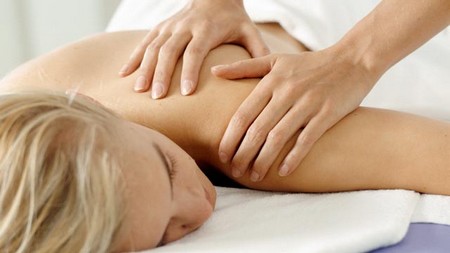Tension is what happens to your body when you are under stress. Tension gets in the way of doing the things that help you overcome depression. Trying out a new activity, or speaking assertively to someone, can make you tense. And sometimes the hassles of everyday life make it difficult to avoid feeling tense. Unfortunately, feeling tense can reduce the levels of key chemicals in the brain, thereby triggering or sustaining depression.
Many of us get caught up in a cycle of working too hard and too long without breaks for fun and relaxation. Sometimes doing anything other than intense work makes us worry and feel guilty. But taking time for relaxation and leisure can actually lead to a more productive and enjoyable work life. Achieving a balance between the things you must do and the things that give you peace of mind and body will pay off in both the short- and the long-term.
Various relaxation techniques can help you relieve the tension that builds up from the day-to-day stresses of a busy life. It may sound odd, but relaxation takes effort, not just plopping down in front of the TV.
Simple steps to relieving tension
Some tension-reducing activities are simple and don’t require new skills. Easy activities such as the following may help ease your tension:
- Listening to music
- Taking a warm bath or shower
- Getting a massage
- Following a yoga or exercise routine
- Rocking in a rocking chair
- Drinking a cup of herbal tea
- Going for a walk
The key to learning how to relax is to practice relaxation techniques regularly. Set specific times and places for relaxing. Arrange to be free from distractions that compete for your attention. Take the phone off the hook. Close your bedroom door if the kids are watching television. Some tension-reducing activities may take a bit of practice before they feel comfortable and easy. You will soon enjoy your daily relaxation time so much that it will become a habit.
Deep muscle relaxation
Deep muscle relaxation can teach you how to recognize tension in different muscle groups and how to systematically release that tension.
Deep muscle relaxation involves first tensing and then relaxing different muscle groups in your body. Once you can do this, muscle tension will become a cue or reminder for you to relax. When you have learned deep muscle relaxation, you’ll be able to relax yourself at the first signs of tension.
When you are first learning this technique, you may want to use one of many widely available audiotapes that can guide you through the deep muscle relaxation procedure. After a few run-throughs you won’t need the tape, although you may still want to use it to cue your body to relax or as part of a soothing bedtime ritual.
Here’s how to do deep muscle relaxation:
In a quiet and moderately lit room, sit in a comfortable chair that supports your entire body. Loosen your clothes and take off your shoes. Position yourself comfortably in the chair and take several deep breaths. Begin by focusing on the muscles in your shoulders. Crunch your shoulders up toward your ears, making them tense and tight for 5 seconds. Focus on the feeling of tension. After 5 seconds release your shoulders totally, noticing the difference in how your shoulders feel in both positions. Pay attention to how your shoulders feel when they’re fully relaxed. Repeat, first tensing your shoulder muscles for a few seconds, then relaxing them again fully. Continue tensing and relaxing different muscle groups one at time. Tense and relax your face, neck, shoulders, arms, hands, abdomen, back, buttocks, thighs, calves, and feet. In each session, go through each muscle group twice before moving on to tense and relax the next body part.
Categories
Advertisements
Recent Articles
 How to Understand Bed Sizes – A Small Guide
How to Understand Bed Sizes – A Small Guide How to Select Some Must Have Kitchen Accessories
How to Select Some Must Have Kitchen Accessories Best Way to Change a Car Tire
Best Way to Change a Car Tire Best Way to Write an Affirmation
Best Way to Write an Affirmation Best Way to Take Charge of Your Financial Life
Best Way to Take Charge of Your Financial Life Best Way to Survive a Party When You Don’t Know Anyone
Best Way to Survive a Party When You Don’t Know Anyone Best Way to Stop Self Sabotaging Yourself
Best Way to Stop Self Sabotaging Yourself Best Way to Start Journal Writing
Best Way to Start Journal Writing Best Way to Speak with a Powerful Voice
Best Way to Speak with a Powerful Voice Best Way to Simplify Your Life
Best Way to Simplify Your Life Best Way to Respond to a Put-Down
Best Way to Respond to a Put-Down Best Way to Reduce Acne Breakouts
Best Way to Reduce Acne Breakouts Best Way to Recover from Dining Disasters
Best Way to Recover from Dining Disasters Best Way to Quit Your Job Gracefully
Best Way to Quit Your Job Gracefully Best Way to Make Your Own Website
Best Way to Make Your Own Website



Leave a Reply